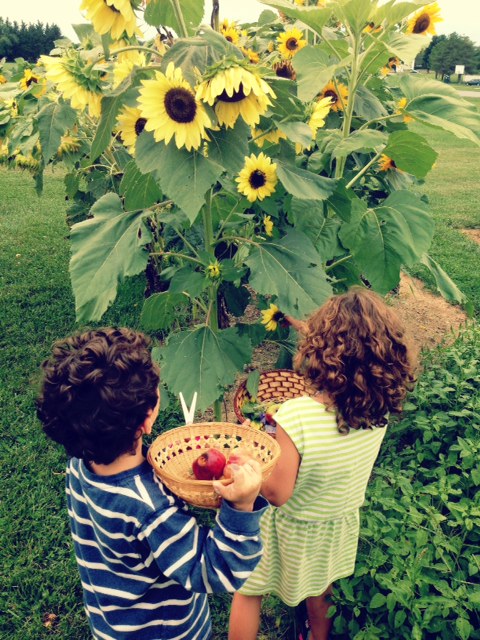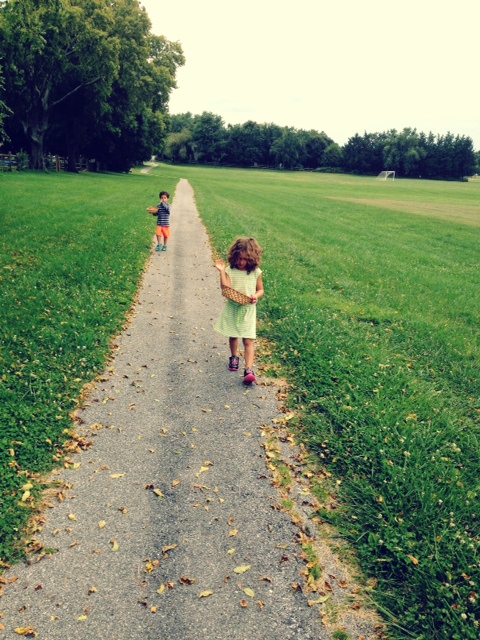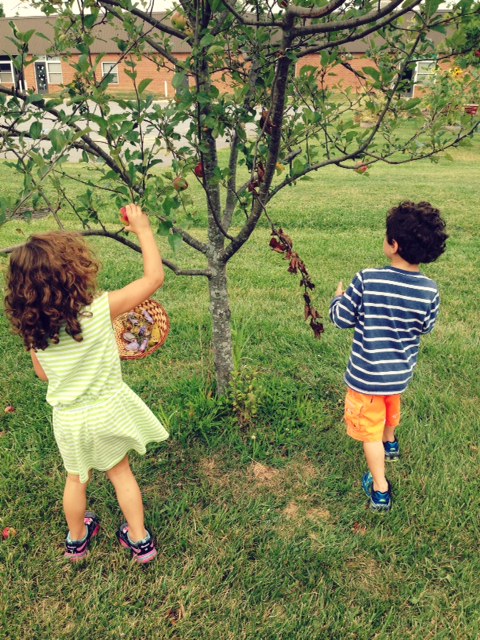I have written previously about process centered art, and the value that the practice holds, however, I realize that for many people this may be a new model of what children’s art (and subsequent learning) “should” look like. I wanted to give a bit of further explanation, along with a recent real life example of when focusing on the artistic process gave way to some collaborative learning. I believe that the key to understanding and embracing this worthwhile method is recognizing that whatever it is that the individual child creates through THEIR process is what that child’s art (and subsequent learning) “should” look like. This is a very dissimilar concept to what the American education system teaches. Many educational institutions, such as the NAEYC, advocate for process based art and learning, especially for preschoolers and kindergarteners, yet much of the research continues to be ignored by our education system. Most schools tend to concentrate mostly on the PRODUCT of children’s art (and as a whole, their learning), which holds very little significance for young children. Product focused art is exactly what it sounds like, it is “creating” something where the value lies in the end product. However, the end product is generally one that has been given to you. It is something that someone else has already created and you are merely replicating their work, and being told by an adult how to do so. From what I have observed, this type of art, a recreated craft or picture, is often more for the benefit of parents, to show them that their child has “created” something that is recognizable to them. Still, this recreation often holds little worth or meaning to the child who made it. The largest benefit of these types of crafts for young children is that they get to hone their fine motor skills. This however is something that children can also achieve through process focused art, along with the other innumerable benefits that go along with the practice.
Just to reiterate and refresh, here are just a few of the wonderful things that can be learned and gained while focusing on the process instead of the product:
- Social and Emotional Development: It is relaxing and theraputic, Children get to express their emotions, they feel a sense of accomplishment and success, they can use symbols to replace real objects which represent ideas and feelings, and they learn to find meaning and satisfaction in the present.
- Language and Literacy Development: Children discuss their art with adults and peers as they are creating, and they can add print to their art, or dictate what they would like it to say
- Cognitive Development: They can make comparisons of texture, color, mediums, etc., they can plan, they can make predictions, they can learn to problem solve and make decisions.
- Physical Development: They use small motor skills to paint, write, glue, mold, and make collages.
It may seem difficult to know where to begin with process focused art, which is why I wanted to give a real example of a collage that we created last week. This was created by two of the one year olds and one of the two year olds I have in my care. It was really wonderful to watch them work on this. Children are often capable of so much more than they are given credit for, and this collage was a perfect example of that.
The first thing that we began with was a wide variety of materials. The children were able to freely choose which materials they wanted to use, and how they would like to use them.
I started this activity with both watercolor and tempra paints, different colored paper, paint brushes, sponges, several types of yarn, cotton balls, felt, pieces of differently textured and patterned fabric, contact paper, tubing, and q-tips.

I let them pick through the materials and they both said that they wanted to paint, so I put out the water colors and tempera paint and let them use their hands, brushes, sponges, cotton balls, whatever they decided on. They spent well over an hour painting, and using the different types of tools and mediums available to them.
Once the two year old had finished painting I asked her if she would like to use anything else on the table, and she said that she would like to use the scissors. I let her choose what she would like to cut and she choose paper. She practiced using the scissors for a bit, but became frustrated, so I showed her that she could also use her hands to rip the paper, which gives a different effect than cutting. She loved ripping the paper and once the one year old saw her doing this, she wanted to join in, so they both spent some time doing that. The one year old also started teasing the cotton balls and yarn apart. Throughout the rest of the process they cut yarn, ripped fabric, and cut fabric.
As they worked we discussed how colors mix to make new colors, we talked about the shapes and colors of the felt that I put out for them, we also sorted the shapes, we talked about the sound ripping paper makes, but how “ripping” yarn makes no sound at all. We talked about all of these things along with much more.


I had contact paper taped to the wall, with the sticky side up, and when they were finished with all of the above I put all of the materials that they had painted, cut, teased, and ripped into two baskets and showed them how they could stick the materials to the contact paper. They LOVED this so much that they worked quietly together for nearly another 40 minutes. The whole project lasted about 2 1/2 hours and they were entirely engaged and active the entire time. The two year old couldn’t wait to show her mom and seemed to be so thrilled about what they had created together. It was really a perfect example of what process art can help children learn and achieve. We were so successful that the next day I repeated parts of the process with the second one year old, we and added to our collage.
I hope that you will try something similar with your little ones and help them to experience some hands on, in the moment, messy, extensive learning!









